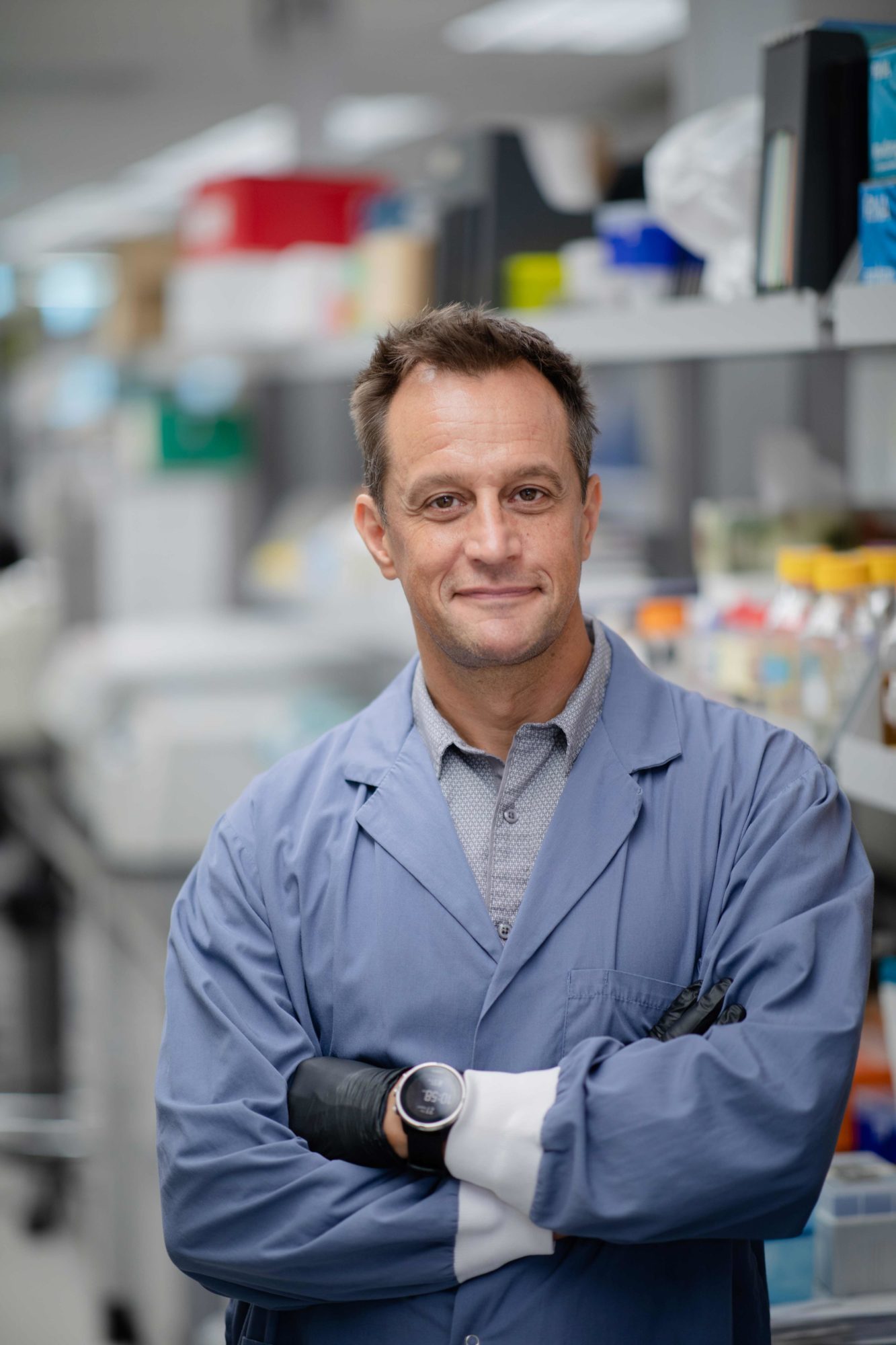
Charlie (name has been changed for patient privacy) was seven months old when he fell off his father’s lap and landed on the back of his head. The resulting brain injury to his right side left him suffering from hemianopia, which is a loss of vision in one side of his visual field. Although Charlie’s right eye could capture the visual information, his brain could not perceive it. Essentially, he was unable to see the right half of his original visual field.
There was no treatment available for Charlie or other patients experiencing vision loss caused by a brain injury in childhood – until now. The ophthalmologists in the Donald K. Johnson Eye Institute’s Low Vision Rehabilitation Clinic partnered with neurobiologist Dr. Michael Reber to test the Reber Lab’s pioneering virtual reality (VR) rehabilitation program with Charlie.

In 2021, at age 15, many years after his brain injury, Charlie underwent a four-week audiovisual rehabilitation program with the Reber Lab. The program, which included three hours and 20 minutes of visual stimulation was remotely controlled, with the scientists and physicians located in the lab and Charlie located in the Low Vision Rehabilitation Clinic, wearing a VR, head-mounted display called Oculus Go.
“In the VR simulation, patients track with a laser the target, which moves and then stops in the virtual space around them,” says Dr. Reber, senior scientist at the Donald K. Johnson Eye Institute. “You have eight balls that are all moving around, and one of them is the target emitting a sound. When patients succeed in following the target, the simulation goes faster and faster. If they fail, it goes slower and slower.”
The treatment was also repeated with two adults, age 29 and 32, who were diagnosed with hemianopia due to having brain tumours during childhood at ages eight and 13, respectively. Their program consisted of five to six weeks of visual stimulation every other day, corresponding to a total of 20 sessions of 15 minutes each for a total of five hours. This time, the patients completed their virtual treatment while located at home, known as telerehabilitation.
“Imagine that for patients who have low vision, this remote treatment simplifies their life a lot because they don’t have to commute,” says Dr. Reber. “They don’t have to travel and stay where they are comfortable and can do the VR training from home.”
Ultimately, in Charlie and the two adult patients, the researchers discovered significant improvement. All three patients showed an increase in their field of vision ranging from 15 to 20 per cent.

Additionally, their contrast sensitivity (the ability to distinguish an object against its background) and fixation stability (the ability of the eye to keep a steady gaze) improved. As a result of the latter, the patients’ reading speed improved by 47 per cent.
The VR program works because “the brain changes over time and the simulation forces the brain to rewire and process vision in a new way,” says Reber. Essentially, the brain is being trained to work around the damaged brain tissue, and create new neural connections within healthier parts of itself to process vision. “You can recreate connections by basically making shortcuts or going around. This is biologically what our simulation does. It recreates new wires or reorganizes the wiring in the dead area so that you can still process visual information.”
Demonstrating that even years after a brain injury or tumour, that VR rehabilitation can improve vision,
Dr. Reber is now collaborating with Dr. Eric Bouffet, Emeritus Professor at the University of Toronto and former Director of the Paediatric Neuro-Oncology Program at SickKids. Together, they will test the treatment on ten children, ages 10 to 17, with brain cancer leading to loss in their visual field. The study started in July 2022.
“There historically has been no treatment available for these children,” says Dr. Reber, quoting Dr. Bouffet. “It’s time to change that.”

No one ever changed the world on their own but when the bright minds at UHN work together with donors we can redefine the world of health care together.


